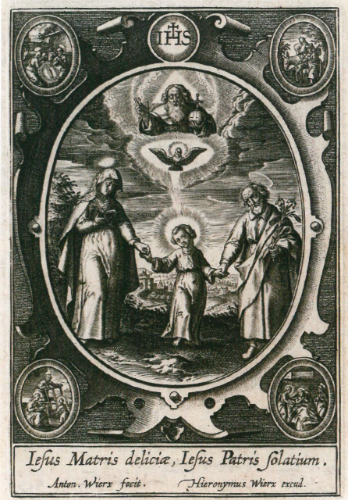Oratory with the crucifixion, Indo-Portuguese, Goa, 17th century
Lot 129. Oratory with the crucifixion, Indo-Portuguese, Goa, 17th century. Estimate 70,000 — 100,000 GBP (92,792 - 139,188 EUR). Photo: Sotheby's.
teak, ebony with silver mounts, ivory, and gilt copper - 110 by 64 by 32cm., 43¼ by 25 1/8 by 12 5/8 .
Literature: P. Dias, Mobiliário Indo-Português, Moreira de Cónegos, 2013, p. 160-165.
Notes: Oratories of this type were used in domestic interiors as private praying altars, although it is possible that they could have been used in individual monastic cells. The present example is exceptional not only for its scale but also for being the only known oratory which combines the traditional Goanese inlaid work of ebony and ivory on teak with a carved interior.
The subtle outside, decorated with exquisite floral designs issuing from vases, opens through hinged doors and sides, with richly carved scenes from the life of the Infant Christ, certainly inspired by European prints, as can be seen by the image of the Holy Family with the Holy Spirit by Hieronymus Wierix (fig.1).
Earthly and Heavenly Trinity, engraving by Hieronymus Wierix (1553-1619).
The compartmentalised arrangement of scenes, although deprived of an architectural frame, follows the structure found in Goanese carved altars, the foremost example being the main altar at Goa Cathedral, which also has the unusual feature of a reticular decoration to columns.
The coeval - and presumably made for this oratory - ebony Calvary group is unusually adorned with silver mounts, instead of the more common gilt copper, and presents a base which follows the early Baroque architectural structure of Goanese church facades. It holds six figures in niches representing episodes of Christ’s Passion. Above these, attending Christ, are ivory figures of Our Lady, St Magdalen and St John the Evangelist, of typical Goanese models (see Ferrão, figs. 173-4, p. 132).
RELATED LITERATURE: B. Ferrão de Tavares e Távora, Imaginária Luso-Oriental, Lisbon, 1983; P. Dias, A Talha Indo-Portuguesa, Coimbra, 2014.
Sotheby's. Of Royal and Noble Descent, London, 19 Jan 2017, 10:00 AM

/https%3A%2F%2Fprofilepics.canalblog.com%2Fprofilepics%2F1%2F0%2F100183.jpg)
/https%3A%2F%2Fstorage.canalblog.com%2F03%2F02%2F119589%2F96711876_o.jpg)
/https%3A%2F%2Fstorage.canalblog.com%2F11%2F31%2F119589%2F94773502_o.jpg)
/https%3A%2F%2Fstorage.canalblog.com%2F20%2F83%2F119589%2F94772815_o.jpg)
/https%3A%2F%2Fstorage.canalblog.com%2F26%2F72%2F119589%2F75604929_o.jpg)
/https%3A%2F%2Fstorage.canalblog.com%2F59%2F60%2F119589%2F26458628_o.jpg)






/http%3A%2F%2Fstorage.canalblog.com%2F32%2F99%2F119589%2F129836631_o.jpg)
/http%3A%2F%2Fstorage.canalblog.com%2F46%2F82%2F119589%2F129704536_o.jpg)
/http%3A%2F%2Fstorage.canalblog.com%2F49%2F48%2F119589%2F129680938_o.jpg)
/http%3A%2F%2Fstorage.canalblog.com%2F64%2F83%2F119589%2F129635530_o.jpg)